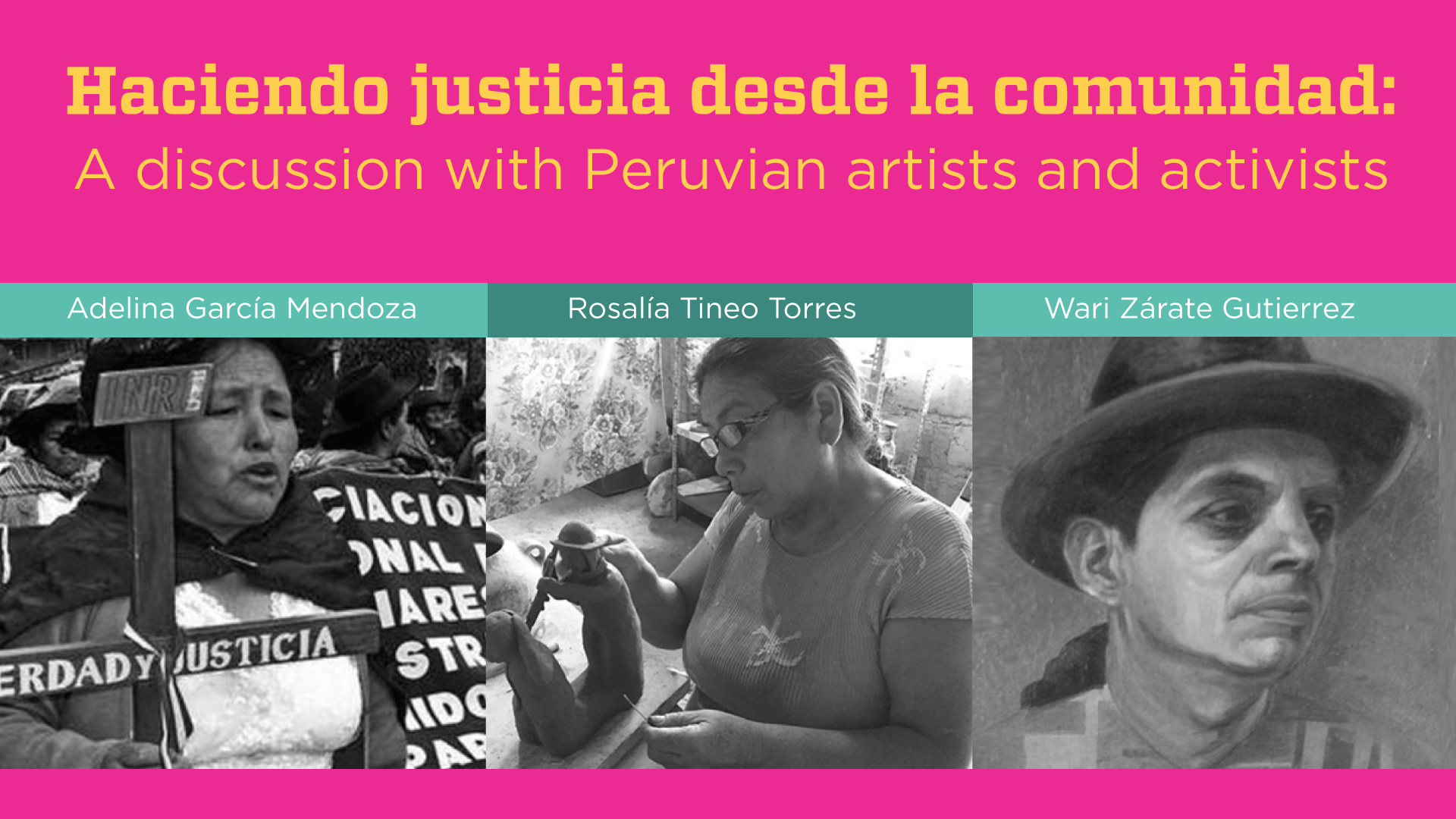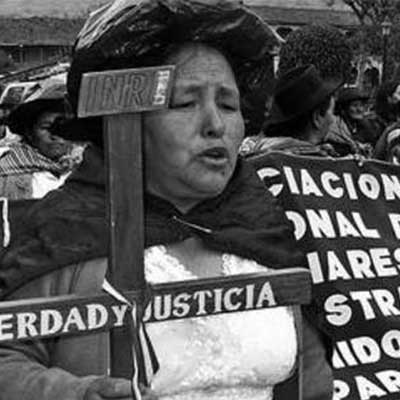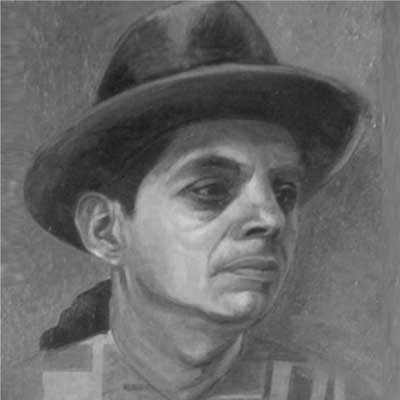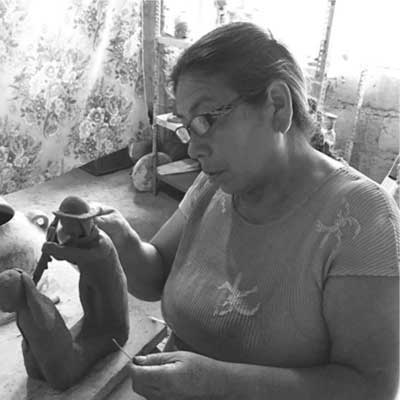Haciendo justicia desde la comunidad: A Discussion with Peruvian Artists and Activists

April 11, 2018 - April 11, 2018
Latin American and Iberian Institute
801 Yale Blvd NE (campus building #165)
The LAII is honored to partner with the International Museum of Folk Art to provide an opportunity for the UNM campus and broader Albuquerque community to meet Peruvian artists and activists Adelina García, Wari Zárate, and Rosalía Tineo whose work is at the forefront of the fight for truth, justice, and reconciliation in the wake of the 20 year internal armed conflict with the Shining Path that claimed the lives of nearly 70,000 Peruvians between 1980 and 2000. Using their traditional folk arts of Ayacucho, they give testimony to the stories of individuals and communities who endured violence. The discussion will take place in Spanish with English interpretation.
The discussion takes place in conjunction with Crafting Memory: The Art of Community in Peru, an exhibit (December 3, 2017 - March 10, 2019) of the Museum of International Folk Art in Santa Fe.
Adelina García Mendoza: Seeking Justice for Quechua Women
The history of ANFASEP (National Association of Families of the Kidnapped, Detained and Disappeared, Peru) was born from the idea of forming an association of women affected by the sociopolitical violence of Peru in the 1980s in order to search for their disappeared relatives and fight for justice. Since then, ANFASEP has formed strategic alliances with the local/ provincial government of Huamanga, regional leaders, politicians, members of the church and non-profit sector, and at the international level with the support of Adolfo Pérez Esquivel (winner of the Nobel Peace Prize), among others. Working along with several civil society organizations, ANFASEP demanded the creation of the CVR (Truth and Reconciliation Commission), participated in the completion of its final report, and contributed to the demand for and emergence of state reparations for victims of the civil war. The construction of ANAFASEP’s Memory Museum "Para Que No Se Repita" was bolstered by unconditional support from foundations and embassies. The association has also supported public ministry officials and forensic anthropologists in completing exhumations of mass graves at military bases. The Chalina de la Esperanza project, in which ANFASEP was a main participant, was critical for the passage of the “Search for the Disappeared” bill in 2016. Since 2005, ANFASEP has demanded the construction of the “Sanctuary of Memory,” seeking support from, government officials, civil society, university representatives, and grassroots organizations.
Wari Zárate Gutiérrez: Psychoemotional Recovery Through Art for Children Affected by Violence
Drawing on a panorama of experiences involving art and children, as well as the use of visual art as therapy, this initiative began in the city of Ayacucho with ANFASEP (1990) and was later implemented at the rehabilitation institute "Alegría de Vivir," or the Joy of Living, in Montreal. Involved since the beginning, Zárate has used artistic expression as a means for aiding the emotional healing of people who suffered or lived in violent contexts. These experiences have helped inidividuals and communities to heal traumas and contributed to their spiritual needs so as to build their self esteem, strengthen their personal relationships, and affirm their cultural identity. The process begins with the premise of "Jugando con el Arte," or Playing with Art, and eventually builds into "Niños, Niñas: Violencia y Arte," or "Children: Violence and Art."
Rosalía Tineo Torres: Together in Memory through Ceramics
Rosalia’s work emerges as a response to the injustices and abuses committed by the government against civil society throughout the war in Peru. The series of human rights abuses endured during the political violence era left affected communities with feelings of anguish, outrage, and resentment. Juvenile violence and violence against women are among the sequels of this pervasive violence. At present, many still experience injustices and lack of response from the state. As a folk ceramics artist, Rosalía seeks to communicate a message through each of her art pieces. In some cases, she evokes feelings of love, peace, joy, and reconciliation, while in other pieces, she reminisces experiences of pain, sadness, horror, and violence. For her, the art is the best avenue to express her feelings, thoughts, and emotions. She finds inspiration to produce her art in the respect she feels for her homeland, Peru’s resources and communities, and the experiences they endured.
Related Programming and Exhibit Information
The three guest speakers will also offer presentations in Santa Fe on April 8, 2018, from 1:00 - 4:00 pm. For more information on this opportunity, please see the flyer and website for "Crafting Memory: The Art of Community in Peru: Places of Memory."
The exhibition as a whole, Crafting Memory, is on display through March 10, 2019. It explores the new directions taken by current Peruvian folk artists during the recent decades of social and political upheaval and economic change. The exhibition will highlight the biographies and social histories of contemporary artists along with examples of work that preserve family tradition, reimagine older artforms, reclaim pre-Columbian techniques and styles, and forge new directions for arte popular in the 21st century.
The past forty years have been a time of tremendous change in the Andes, beginning with the Agrarian Reform of 1969 that broke up the large haciendas; a twenty-year internal armed conflict with the Shining Path that engulfed the 1980’s and 1990’s and claimed nearly 70,000 lives; economic swings, rapid development, the recent large investment in preserving archaeological heritage and the current booming tourism industry.
All of these forces have all shaped the lives of artists and informed the art they create. Crafting Memory visits a series of contemporary folk artists in Peru and places their work within this larger framework of Peruvian history and social change. The exhibition will explore the many routes through which craft and folk arts are learned and practiced, including multigenerational crafting families, self-taught artisans, and others who came to folk arts as a means of economic survival during the time of violence. The show includes a third generation silversmith reviving the art of tupus or shawl stick pins that were worn during the Inca Empire; the art of war orphans from the 1980’s who were trained in traditional arts to give hope in dark times; and a collective of young artists in Lima using the medium of silk screening to promote conversations between rural highland and jungle communities with their counterpart migrant neighborhoods in the city, celebrating their shared arts, culture, and customs and emphasizing the value of the handmade, and the ideas, values, and aesthetics that arise from Cultura Popular - common people and everyday life.

Adelina García Mendoza

Wari Zárate Gutiérrez

Rosalía Tineo Torres
This program is funded by the International Folk Art Foundation, Museum of New Mexico Foundation, the Latin American and Iberian Institute at UNM, David and Edelma Huntley, Susan Howard and Vincent Pigott, and Libby Wilson. We offer special thanks to Fiorella Vera-Adrianzen, doctoral student in the UNM Department of Political Science, for her invaluable assistance.
Sponsors:
- International Museum of Folk Art
- Museum of New Mexico Foundation
- David and Edelma Huntly
- Susan Howard and Vincent Pigott
- Libby Wilson
- Latin American and Iberian Institute (with support from the US Department of Education Title VI)
